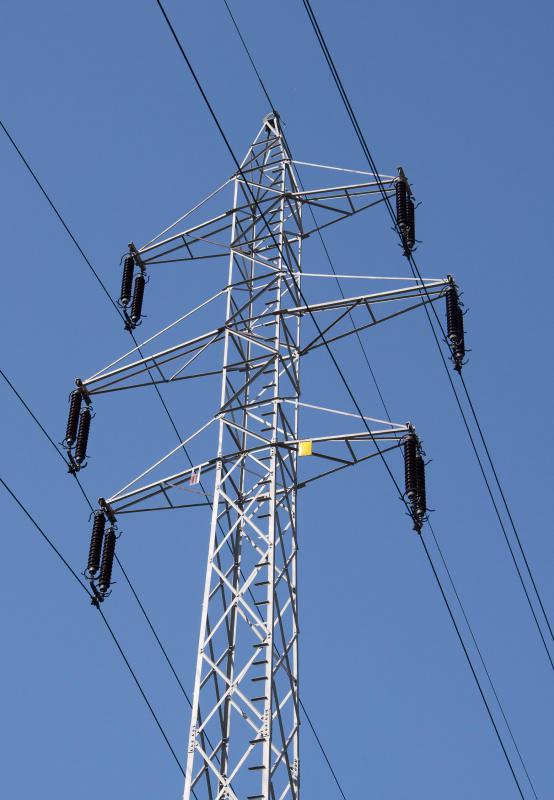At PracticalAdultInsights, we're committed to delivering accurate, trustworthy information. Our expert-authored content is rigorously fact-checked and sourced from credible authorities. Discover how we uphold the highest standards in providing you with reliable knowledge.
What Does a Transmission Line Engineer Do?
Transmission line engineers are professionals who combine their knowledge of math and science to design structures that transfer electrical energy from one point to another. The cables provide power to buildings in residential areas, business districts, and even in farmland regions. An individual who is interested in becoming a transmission line engineer typically must have earned a four-year bachelor’s degree in civil or electrical engineering. Engineers must develop drawings of transmission lines and oversee the construction phase of these projects. They also have to inform the public about their efforts and receive official approval for the work.
A transmission line engineer’s chief area of concentration is to make sure that transmission lines are designed in a way that make them suitable for operation. He or she has to envision a structure that is easy to maintain and that complies with technical and materials requirements. The created transmission lines, however, still must meet budget requirements for the company planning to manufacture them to result in profits, and not losses, for the organization.

Putting together actual drawings using computer-aided design (CAD) software is a major responsibility of an engineer in the electric cable industry as well. Some products actually are created specifically to generate transmission line models. Drafts must pinpoint the routes of lines as well as demonstrate how much electric current must flow through the structures. A transmission line engineer should participate in seminars regularly to stay up-to-date on the industry's computer programs and remain competitive in this field.
In addition to managing the installation of objects, transmission line engineers additionally must collaborate with external engineering experts. For instance, he or she has to review and accept the invoices of outside engineering consultants to make sure that their complementary work is in line with his or her company’s project objectives. He or she also is active in the construction stage of each project and needs to be prepared to research solutions to problems that arise.
Reaching out to the public and complying with government regulations is part of the job description as well. Sometimes these professionals have to provide expert testimony during hearings regarding the need for new electricity lines in an area and how such projects could affect area homeowners’ properties. In addition, a transmission line engineer gathers documents together to submit when applying for a municipality’s permit prior to beginning cable development efforts in an area.
AS FEATURED ON:
AS FEATURED ON:











Discuss this Article
Post your comments